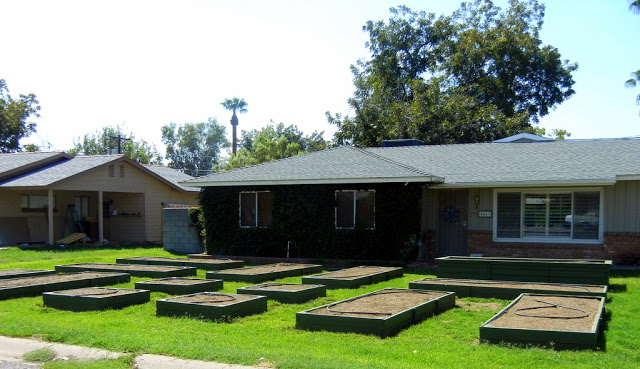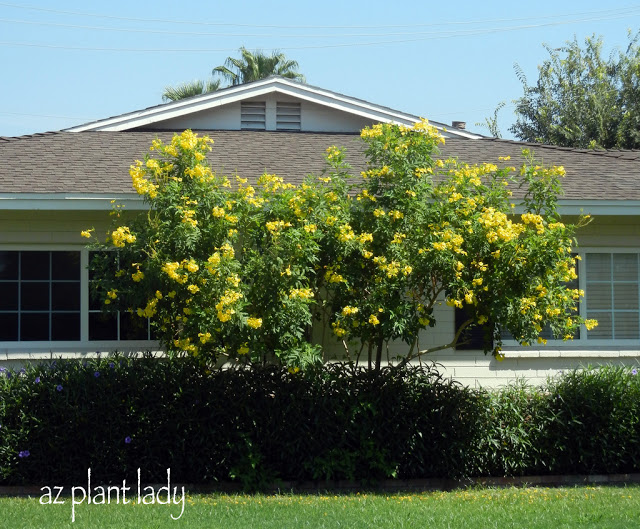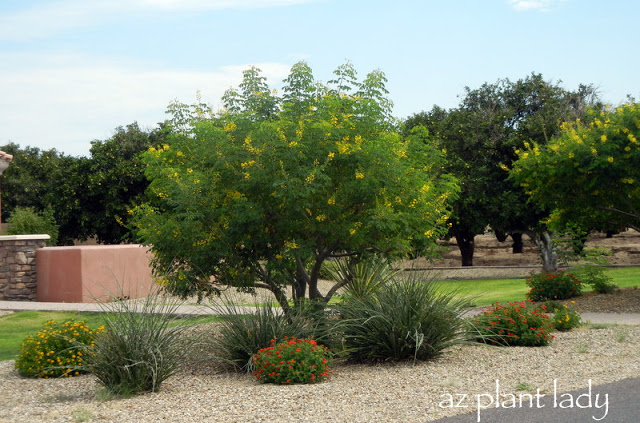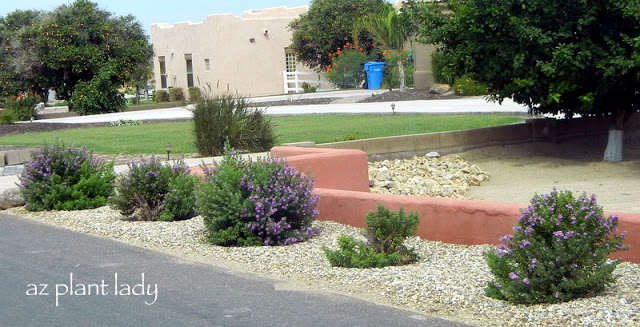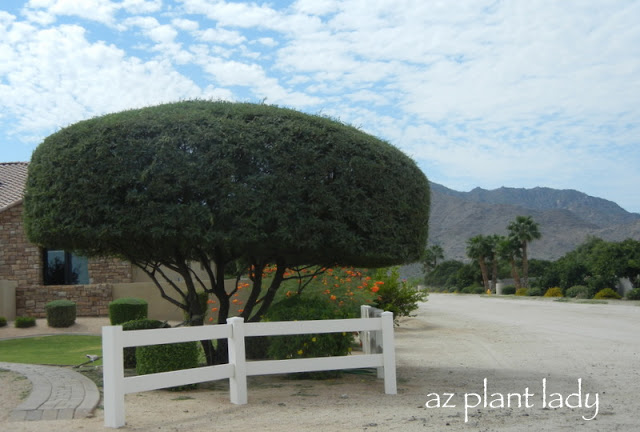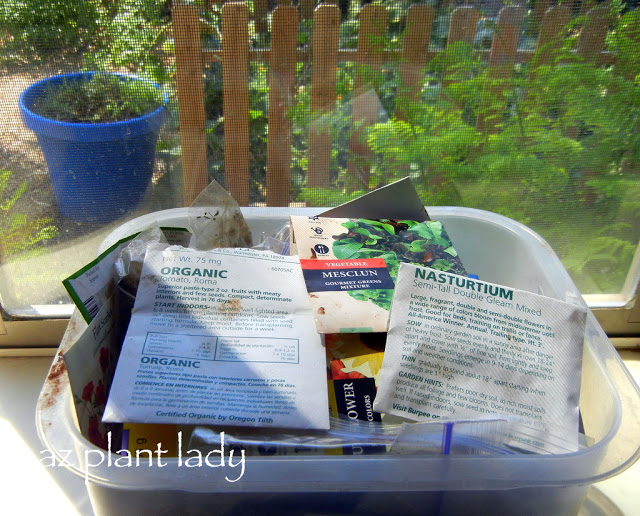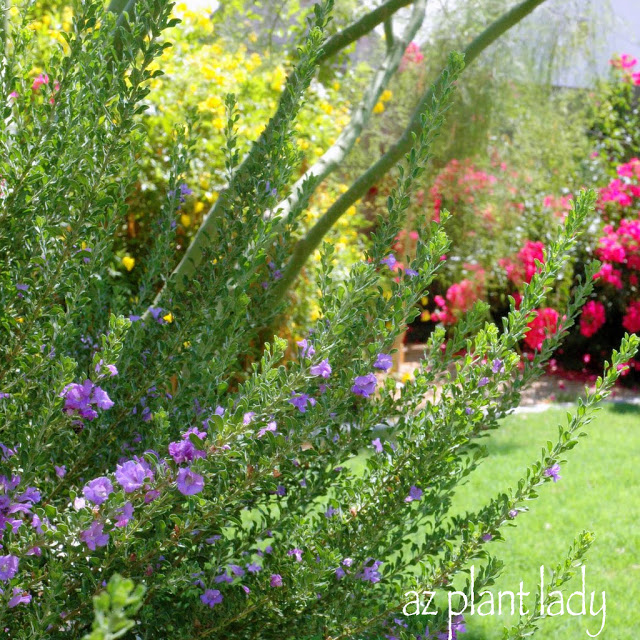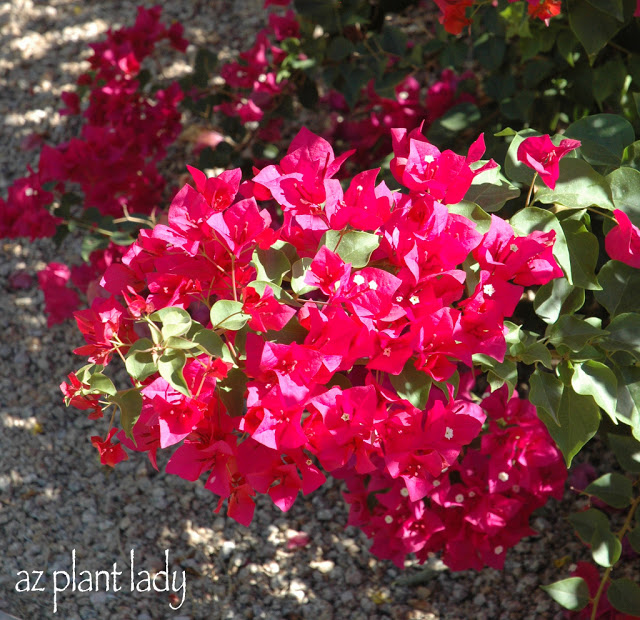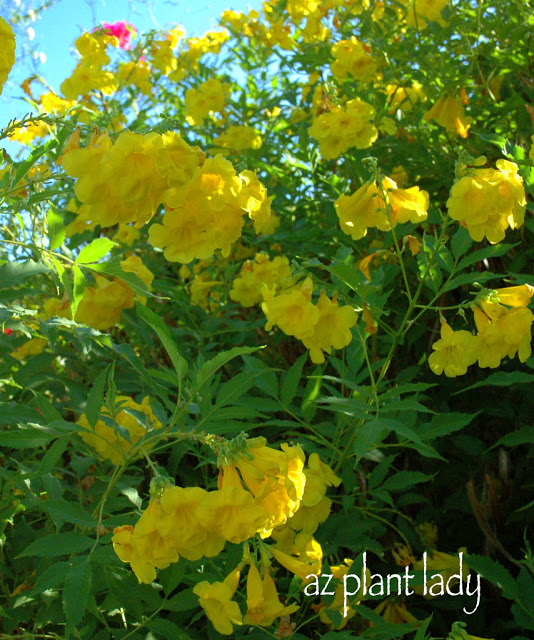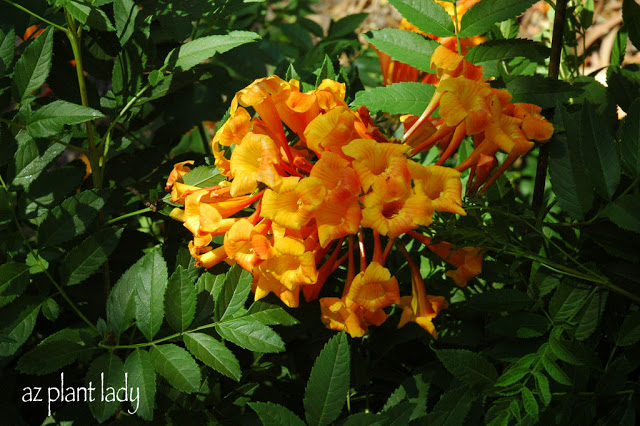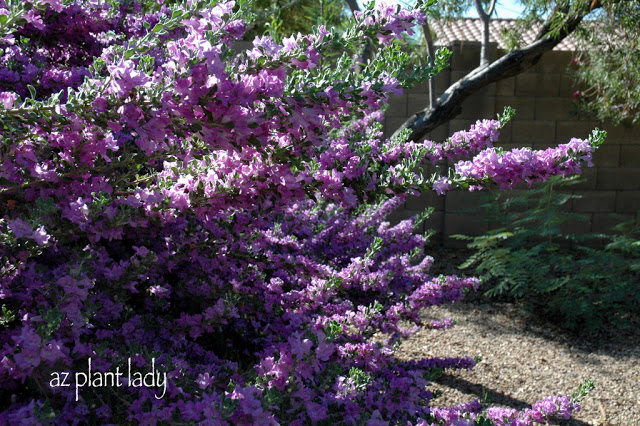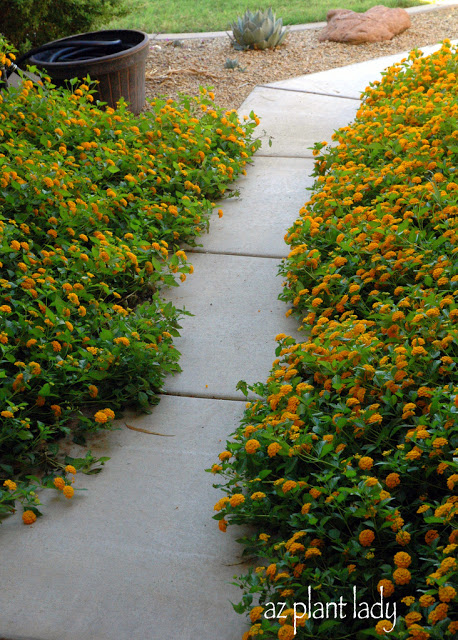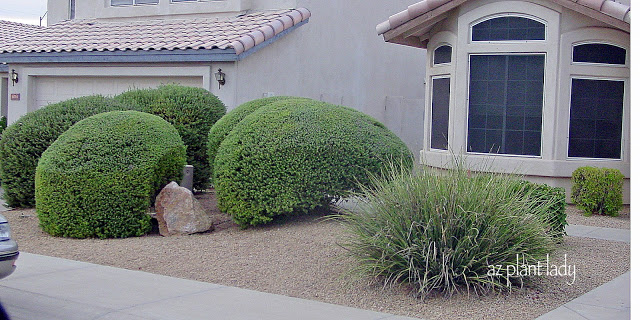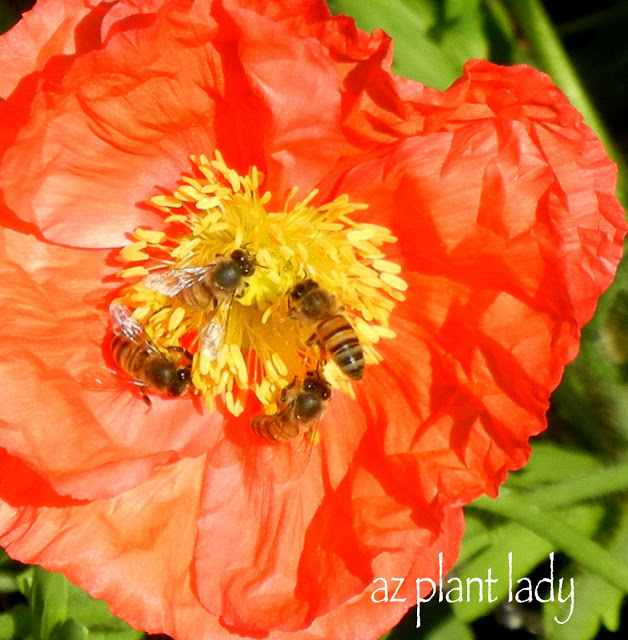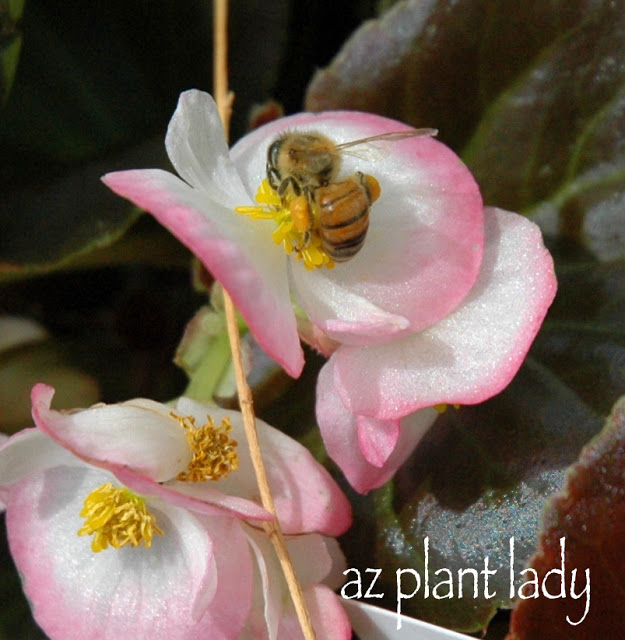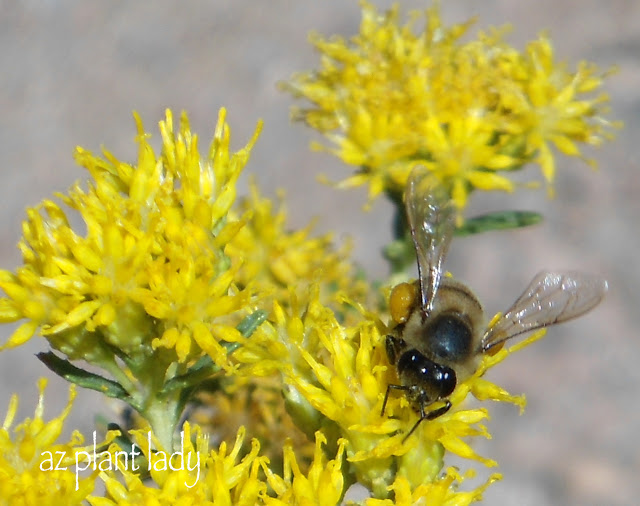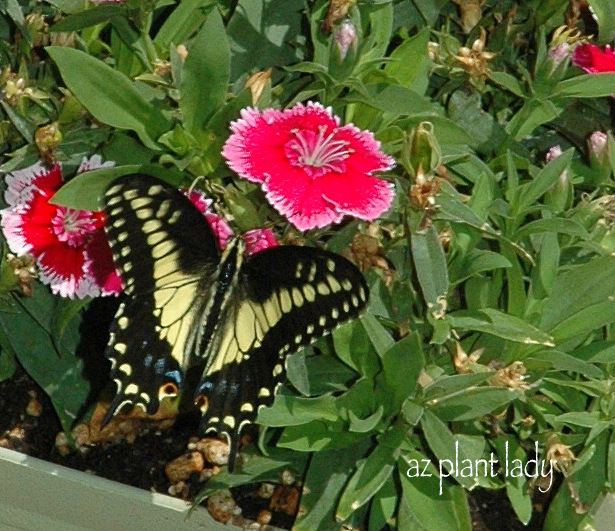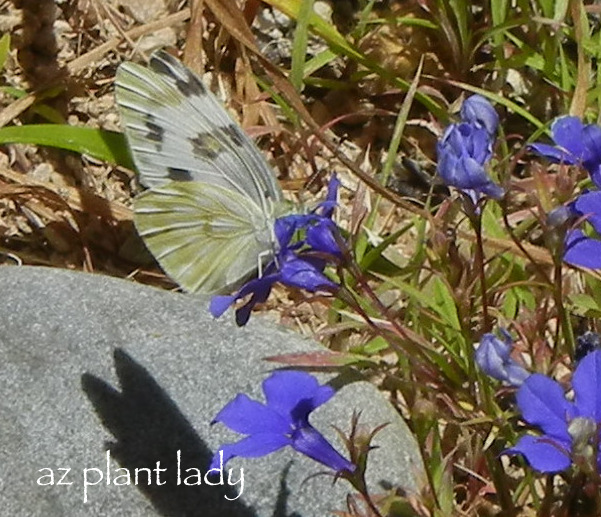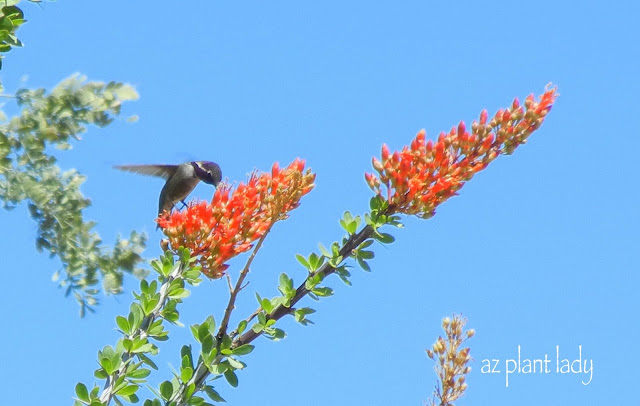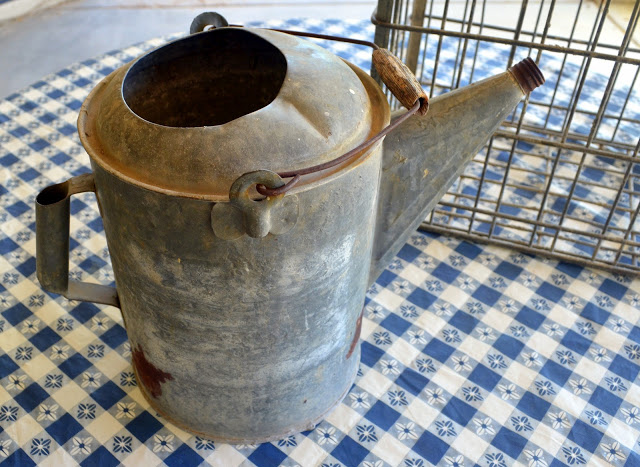It’s that time of year, the weather is cooler, the trees are dressed up in their colors and people are almost ready for Halloween.
My youngest daughter, Gracie, is going to be a ‘butterfly princess’ this year and my son Kai will be the ‘Brawny’ paper towel guy. I bought him work boots (he loves those), a flannel shirt and of course, a package of ‘Brawny’ paper towels.
This year, we will be hosting the family Halloween night with my sister, brother and their families. I can hardly wait.
This post has been a huge favorite every year. I hope you enjoy it!
*********************************
My kids, aren’t the only ones ready for Halloween. Use your imagination and see how these plants are prepared as well…..
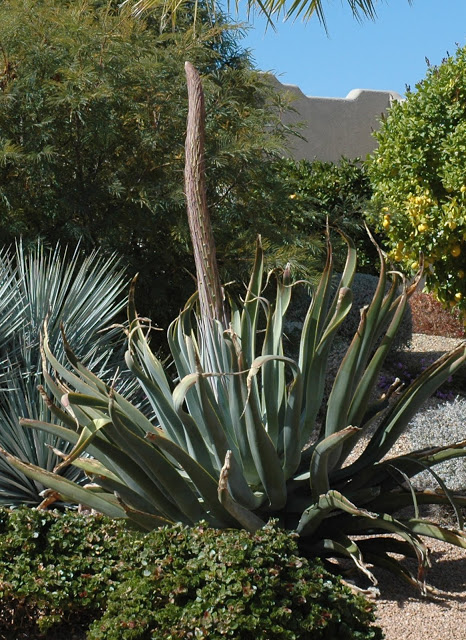
Octopus Agave (Agave vilmoriniana) beginning growing it’s snake-like flower stalk.
Growing up to one foot a day, like a snake coming out of the snake charmer’s basket.
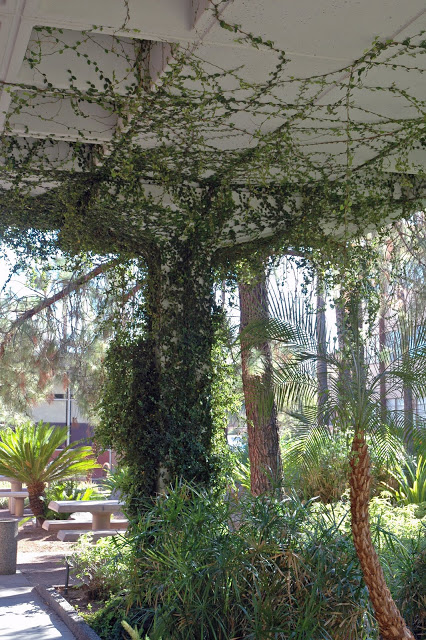
Creeping Fig (Ficus pumila) climbing up the pillar and underneath….hanging down like spiderwebs.c

A Yucca reclining like a lovely lady.
But beware….she stabs you with her leaves if you get too close….
(This Yucca was trained to grow this way)
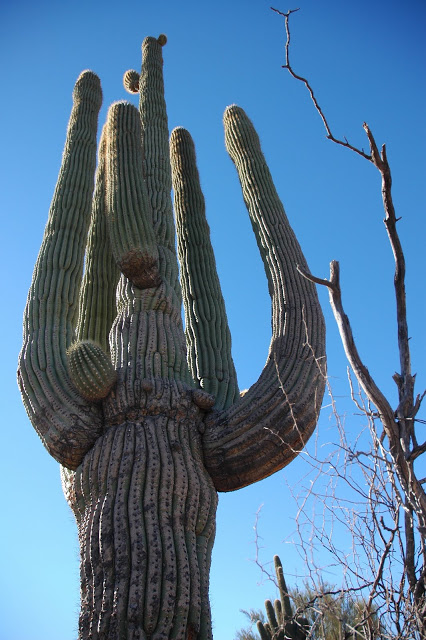
Saguaro (Carnegiea gigantea) dressed as a giant.
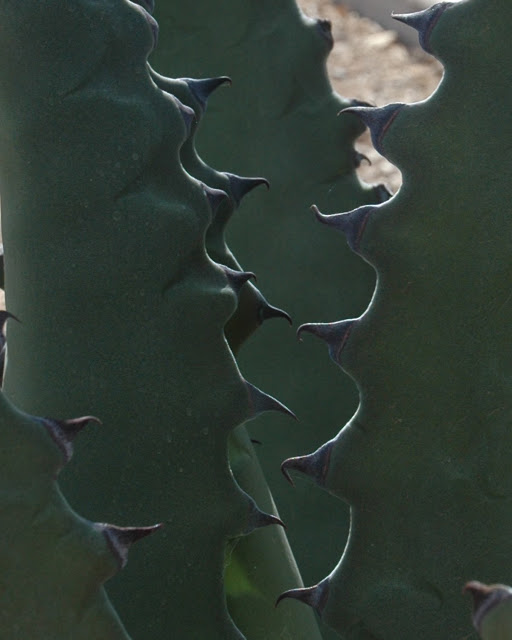
The ‘claws’ of an Agave
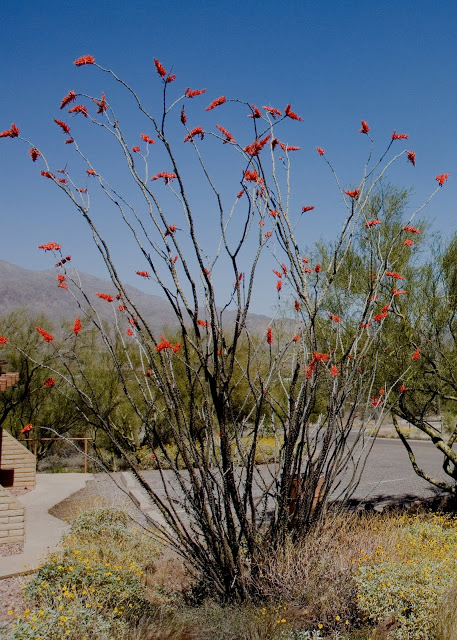
Ocotillo (Fouquierea splendens) with a Medusa hairstyle.
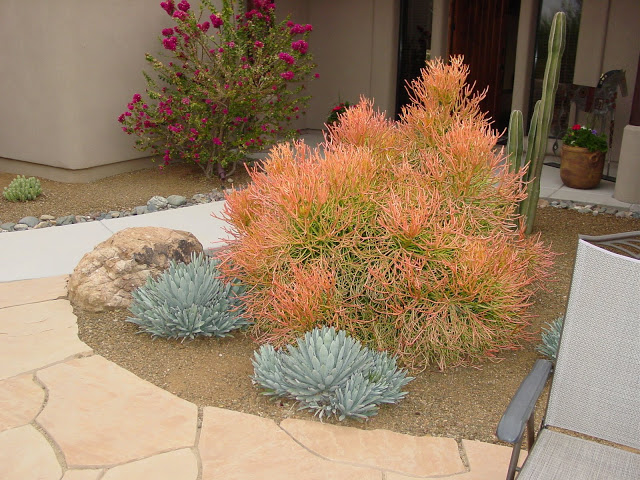
Sticks of Fire (Euphorbia tirucalli), will not burn you….but it is poisonous.

The spooky silhouette of a Shoestring Acacia (Acacia stenophylla).
You can almost hear the hooting owls…
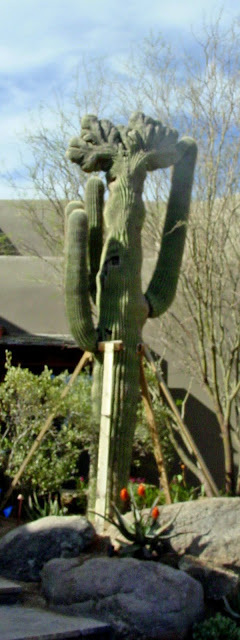
Crested Saguaro (Saguaro carnegiea)
A saguaro all dressed up with a new hairstyle.
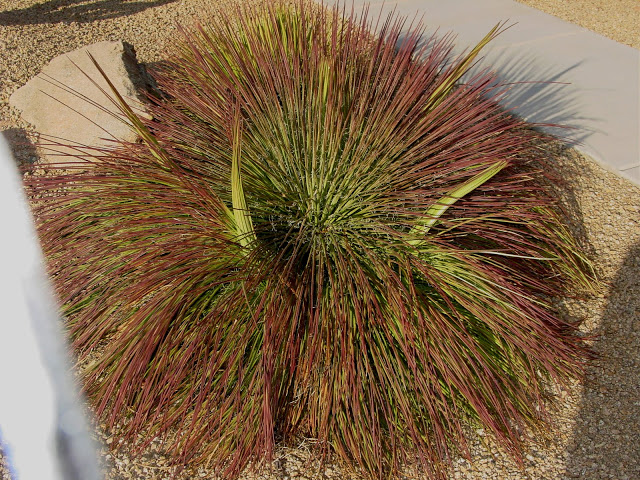
Twin-Flowered Agave (Agave geminiflora), sprouting horns.
And finally….
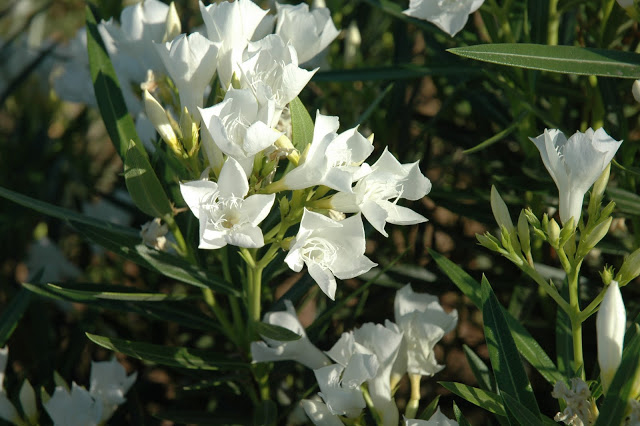
A beautiful White Oleander (Nerium oleander) flower lures you in with her subtle fragrance.
But Beware! She is deadly if ingested…
I hope you enjoyed the plants in their “costumes”.
Are you or your children dressing up for Halloween this year?
What as?




